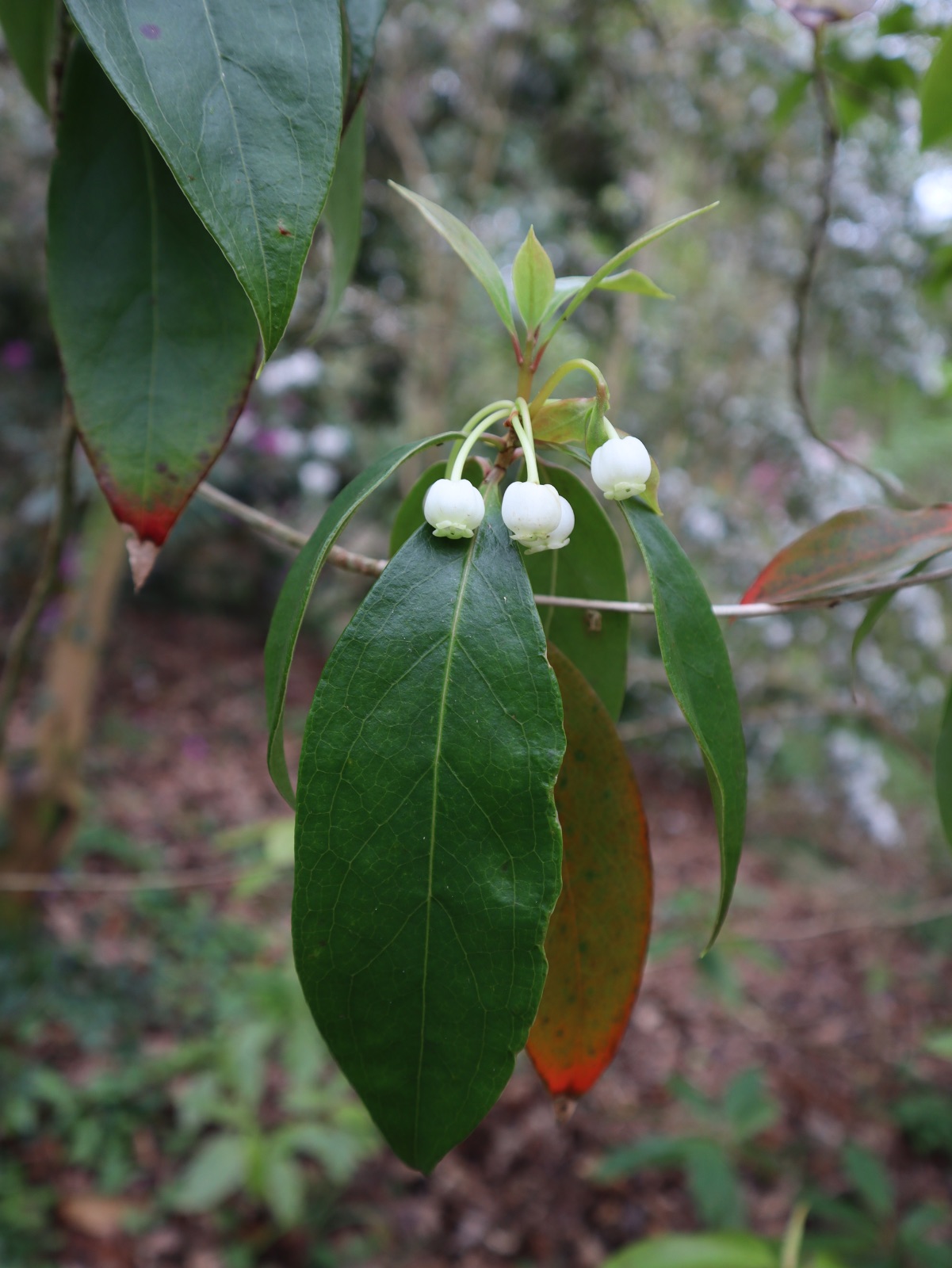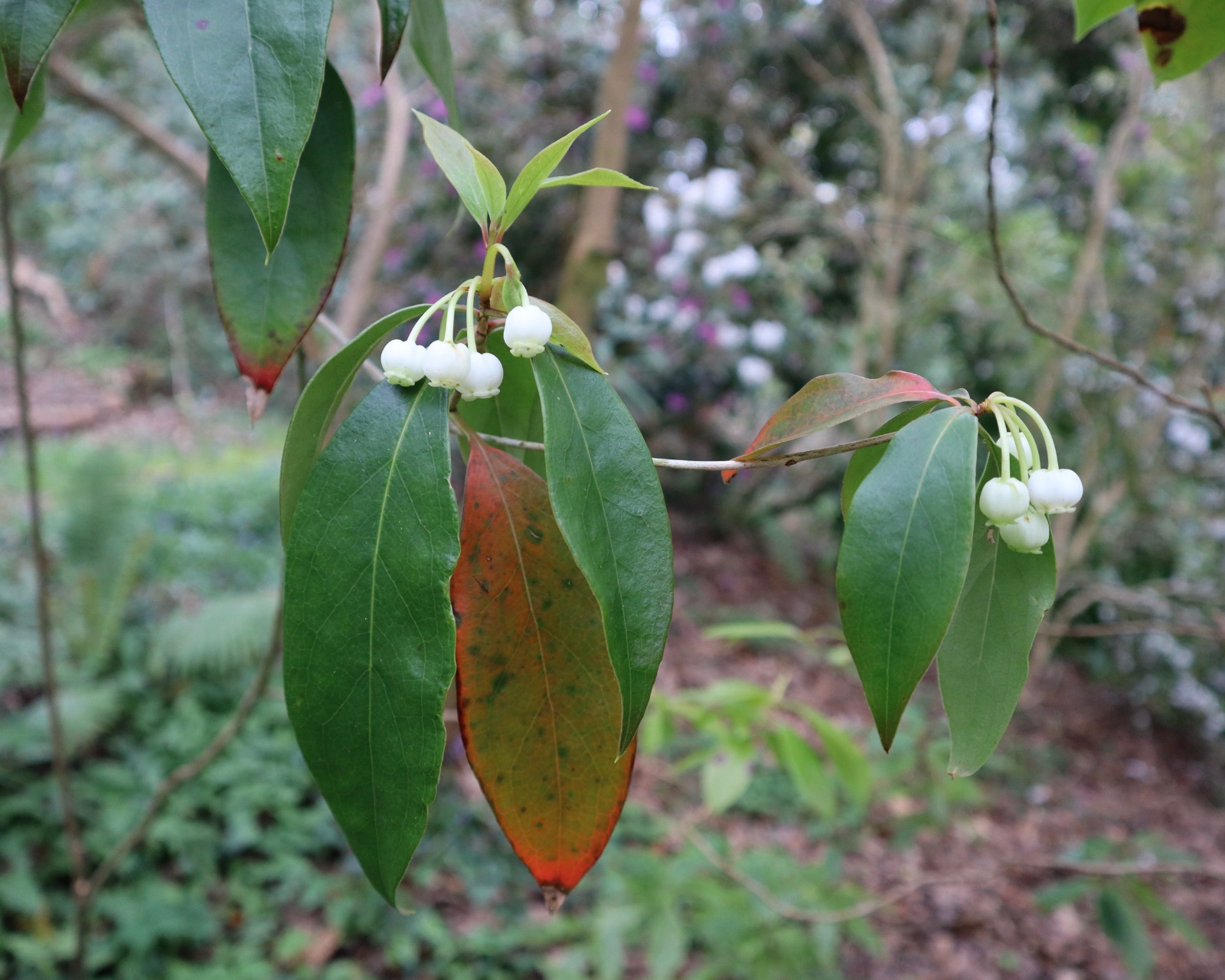Enkianthus serotina
Sponsor
Kindly sponsored by
Alasdair and Panny Laing
Credits
Tom Clark (2023)
Recommended citation
Clark, T. (2023), 'Enkianthus serotina' from the website Trees and Shrubs Online (treesandshrubsonline.
Genus
- Enkianthus
- Section Enkianthus
Common Names
- wan hua diao zhong hua
Synonyms
- Enkianthus tubulatus P.C. Tam
Deciduous shrub 1.5–4 m tall. Twigs pilose or subglabrous. Leaf petiole 1–2 cm, glabrous; leaf blade elliptic, rhombic-elliptic, or lanceolate, 5–9 × 1.7–4 cm, thinly leathery, glabrous except abaxially densely floccose towards base on midvein, midvein distinct on both surfaces, secondary and fine veins inconspicuous on both surfaces, base cuneate, margin entire or sinuolate-serrulate towards apex, apex acuminate or abruptly acuminate. Inflorescence umbellate, 2–7-flowered. Pedicel recurved, 1–1.5 cm, pilose. Calyx glabrous; lobes lanceolate, 2.5–3 mm. Corolla white, tubular-campanulate, gibbous at base, 8–9 mm; lobes recurved, broadly ovate, ciliate. Filaments pilose. Ovary glabrous. Capsule 8–11 mm tall; stalk erect, 2–3.5 cm. Flowering April–June, fruiting July–September. (Ruizheng & Stevens 2005).
Distribution China Guangdong, Guangxi, Guizhou, Sichuan, Yunnan
Habitat Forests, thickets on slopes; 800–1500 m asl.
Conservation status Not evaluated (NE)
Enkianthus serotina is apparently not currently in cultivation. This is unfortunate as it bears attractive white flowers emerging from richly coloured bud scales before the leaves develop. Closely related to E. quinqueflorus, this species occupies a more restricted range and does not occur beyond south-central China. E. serotina differs from E. quinqueflorus on account of having fully deciduous, more chartaceous leaves with inconspicuous veining; abaxially the leaves are densely floccose towards the base of the midvein as opposed to being entirely glabrous in E. quinqueflorus. E. serotina also bears fewer flowers per inflorescence (Ruizheng & Stevens 2005).



